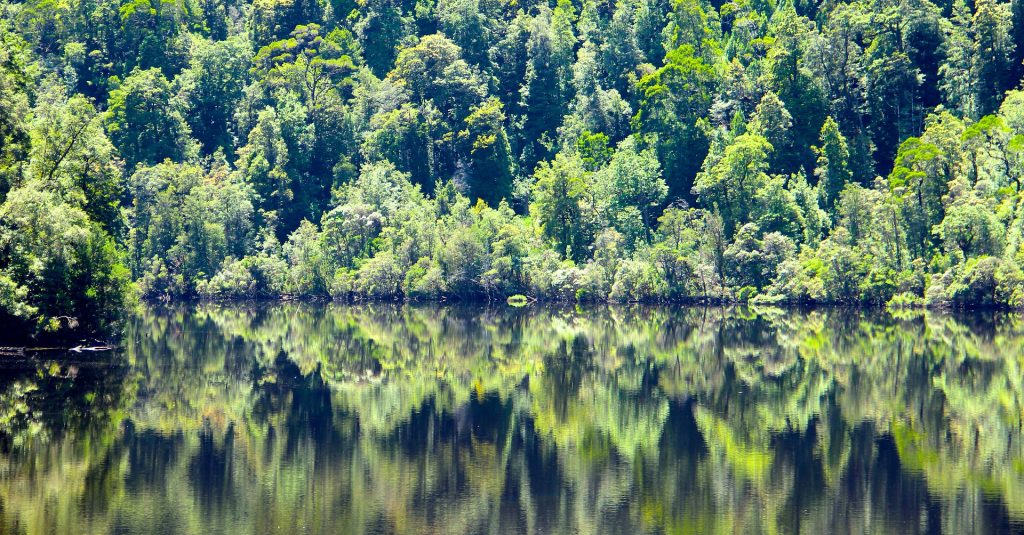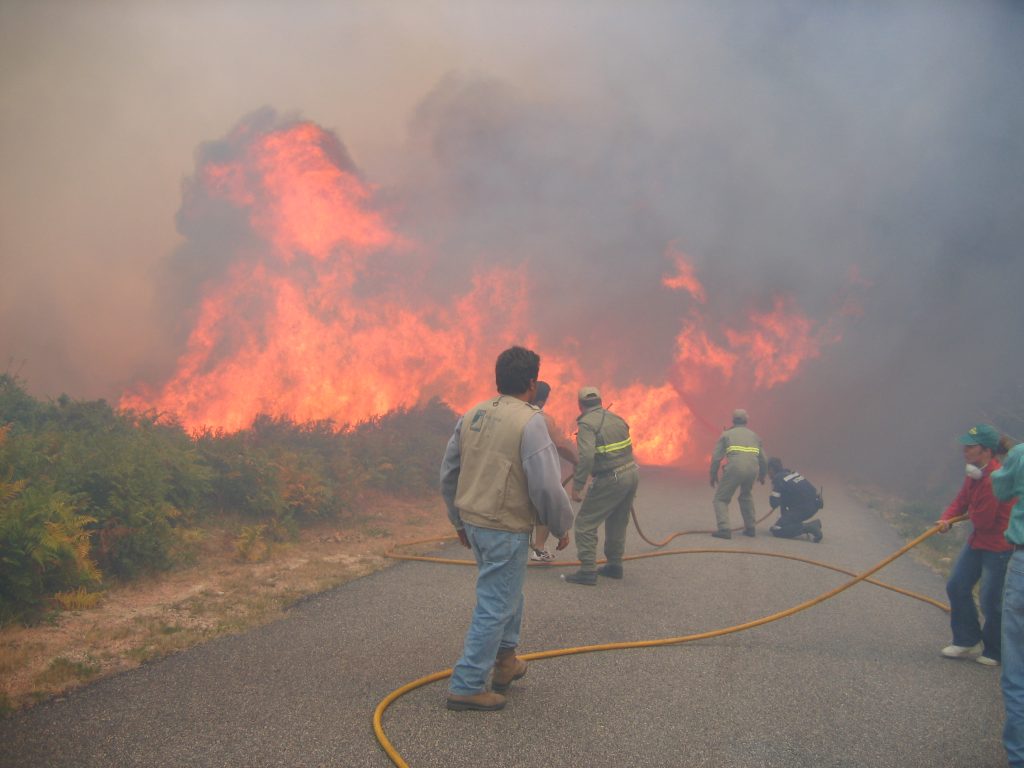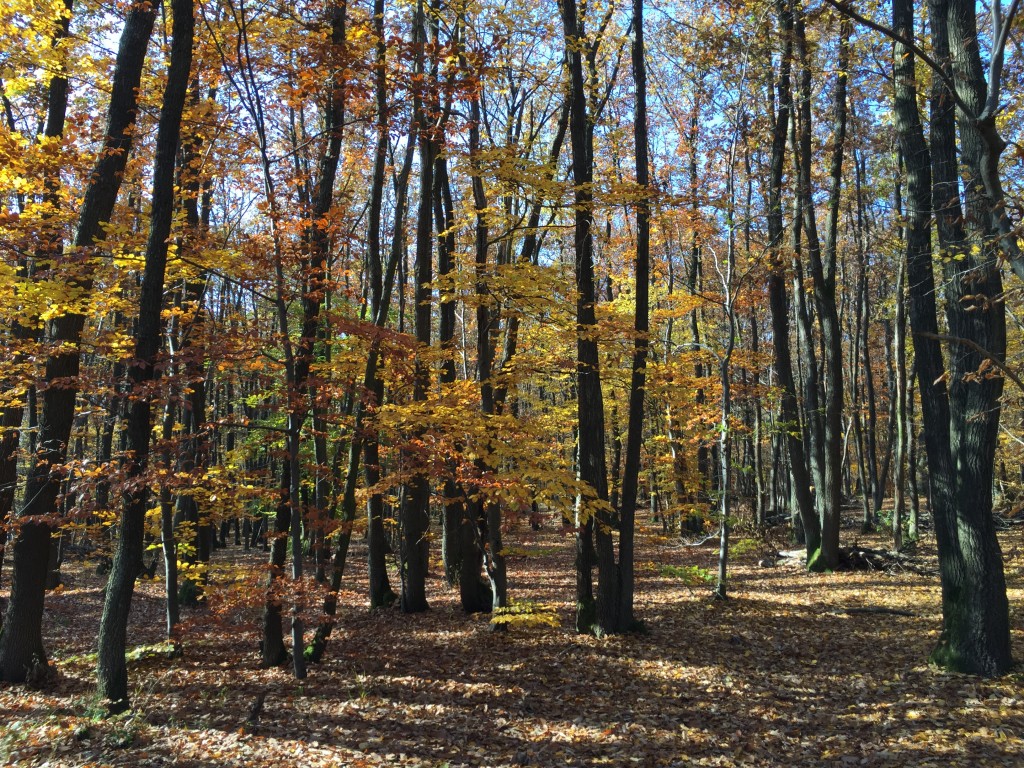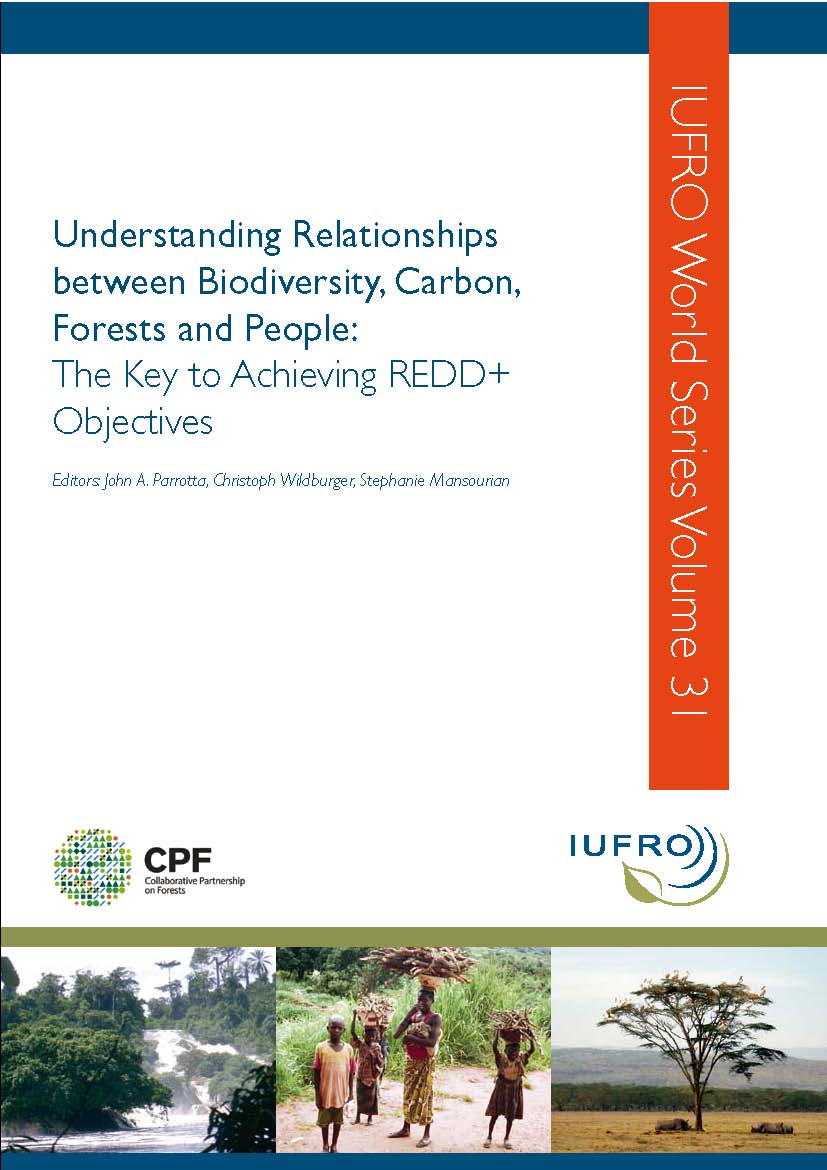Forests and Water
Forests and Water
Science-Policy-Practice Interface for Managing Forest and Water Interactions under a Changing Environment

Water is fundamental to life on earth. What may not be quite so obvious is that forests are equally vital resources for life on the planet.
And the two – water and forests – are inseparable in the pursuit of a sustainable and sustainably developed world. Therefore, forests and water resources have been identified as essential elements in adaptation to climate change.
Read more…Spotlight #83 – Examining the Economic Drivers of Wildfire: Where There’s Smoke, There’s Finance
Spotlight #83 – Examining the Economic Drivers of Wildfire: Where There’s Smoke, There’s Finance

“The world is ablaze. Or so it seems, and the scenario is repeating itself every year now,” says Dr. François-Nicolas Robinne, of the University of Alberta’s Department of Renewable Resources, and Coordinator of IUFRO’s Fire$: Economic Drivers of Global Wildland Fire Activity Task Force (TF).
Considering the Human Dimension when Restoring Forest Landscapes

Integration of Western and Traditional knowledge in FLR planning and implementation can result in more comprehensive, locally grounded, and socially and culturally acceptable restoration projects. This scene from the Ilmil Valley in the Atlas Mountains (Morocco) depicts a mosaic of agricultural and forest management practices used by farmers to support their livelihoods and food security while conserving forest biodiversity. Photo: John Parrotta
Much has been written about forest landscape restoration (FLR) from a silvicultural or ecological perspective: techniques, approaches, methods, case studies, have all tended to focus on the practical and technical tools to implement forest restoration. However, relatively little attention has been given to human dimensions.
In fact, there is limited guidance on how to go about restoring forest landscapes when it comes to integrating both ecological and human dimensions of FLR. The need for this integration was the main motivation for the newly published book entitled Forest Landscape Restoration: Integrated Approaches to Support Effective Implementation, which was edited by Stephanie Mansourian (Consultant, member of IUFRO Task Force Forest Adaptation and Restoration under Global Change, and Research Associate, University of Geneva, Switzerland), and John Parrotta (US Forest Service and IUFRO Vice-President). Read more…
The crucial role of forests in combatting climate change
Session title: A-03 (76) Implications of the Paris Climate Change Agreement (CoP21) on Forests, Water and Soils
Moderator: Richard J. Harper, IUFRO Taskforce Coordinator “Forests, Soil and Water interactions”, Murdoch University, Australia
Tuesday, 25th of October 2016, 10:30-12-30 (306B)
Find more information on the IUFRO Task Force of Forests, Soil and Water interactions at: http://www.iufro.org/science/task-forces/forests-soil-water/

Tree at lake, Laos. Photo: all-free-download
The Paris Agreement established the ambitious goal to limit the global rise in temperature to below 2° C. This session took a look at the impact climate change as well as mitigation measures potentially have on forests, soil conservation and carbon mitigation. Read more…
Spotlight #34 – Investigating Potential and Risks in Biomass

Coppice woodlands once provided significant shares of biomass for thermal energy in the proximity to urban areas, while representing hotspots of biodiversity. Can we adopt traditional management practices to today’s needs and still ensure sustainable production? And how can we harmonize existing guidelines to achieve this goal? The image shows a Quercus-Carpinus dominated outgrown coppice forest that is situated within the city boundaries of Vienna, Austria. (Photo by Viktor Bruckman)
Renewable resources are critical to the sustainable future of our planet. That means biomass is being looked on, in many ways, as a potential game-changer.
It is seen as a mitigator of climate change, as a source of energy and as the source for a variety of bio-based products that range from wood to bio-plastics and composite materials.
Recognizing this, IUFRO’s newly constituted Sustainable Forest Biomass Network Task Force plans to explore the potentials and the risks of further development of biomass – specifically biomass from forests.
The Task Force is one of several organized to advance knowledge under five research themes in accordance with the IUFRO 2015-2019 Strategy. Read more…
Afforestation of Subtropical Grasslands for Climate Change Mitigation
All year round, IUFRO (www.iufro.org) scientists hold or participate in meetings to present results and exchange knowledge in all fields of research related to forests. Quite recently, only a short time before the Global Landscapes Forum in mid-November on the sidelines of the Warsaw Climate Change Conference, IUFRO scientists were again discussing issues of great relevance to this upcoming event, namely at the:
1st International Symposium on Afforestation of Pastures in Subtropical Regions
IUFROLAT III Session Highlights: Forests, Biodiversity and Ecosystem Services
Bosques, Biodiversidad y Servicios Ecosistémicos / Forests, Biodiversity and Ecosystem Services
Session moderator: Bryan Finegan, CATIE, Costa Rica, IUFRO Task Force Coordinator
Thursday, 13 June 2013, 14:00-16:00 (Chirripó)
Find more information on the IUFRO Task Force Forests, Biodiversity and Ecosystem Services:
www.iufro.org/science/task-forces/biodiversity-ecosystem-services/
The session offered insight into functional ecology, with emphasis on climatic conditions along elevation gradients showing that biodiversity decreases with increasing altitude. It also dealt with the provision of ecosystem services in relation with biodiversity. Biodiversity is essential for pest damage resistance, for example. Source dilution, chemical signals and activity of natural enemies are identified as being essential for ensuring low pest damage. With increased source dilution, pests are less likely to establish themselves in a diverse setting. With increased chemical signals associated with diverse flora, pests are less likely to find their favourite source. And with a high number of natural enemies, whose presence is correlated with high biodiversity, pests are less likely to cause damage. Hence, diversification on a stand/landscape level is needed to ensure the provision of forest ecosystem services.
Plant conservation in Southeast Asia was another topic. In Malaysia, for example, efforts to preserve plants have become a prevalent goal for scientists. Diversity is vast, and since 40 – 50 % of the preserved species are endemic, 24% of which are either endangered (EN) or critically endangered (CR), conservation is a central goal. While the pleas of scientists are being heard in some cases, legal frameworks are needed to protect these species.
A presentation on the carbon sequestration potential for complex mosaic forest landscapes in western Mexico aimed at addressing shifting cultivation, framed in the carbon emission discourse. With shifting cultivation, carbon is released to the atmosphere, adding to GHG concentrations. However, the study showed that on a landscape level, there are no net carbon dioxide emissions, as the carbon sequestration rate of forest re-growth compensates for the carbon emission from shifting cultivation.
The presentation entitled “Native forest cover increase: drivers and implications on ecosystem services”, focused on why some areas in the Piracicaba river basin were allowed to reforest. Satellite imagery helped determine deforestation and reforestation from 1990 – 2010. Having preselected variables, the results demonstrate that natural reforestation occurs when slopes exceed 30%, when water proximity is less than 100 m, when annual rainfall exceeds 1400 mm, when elevation is lower than 400 m below sea level or more than 800 m above sea level, and when vicinity to towns is more than 7 km.
The final paper focused on Chakras, forestry systems that are employed by indigenous peoples in the Amazon. Plant composition in Chakras is heterogeneous; they provide multiple sources of food, are biodiverse and function as stores of carbon. The presented study demonstrated that in Chakras, fauna is more diverse, carbon storage is higher in both biomass and necromass than in comparable Cocoa plantations.
Presentations in this session:
Bosques lluviosos tropicales, biodiversidad y servicios ecosistémicos en la era de cambio global; nuevas perspectivas desde la ecología functional (Bryan Finegan, CATIE, Costa Rica)
Forest biodiversity and resistance to pest damage. (Eckehard Brockerhoff, Scion, New Zealand)
Challenges in Developing Practical Plant Conservation Strategy in SE Asia. (Su See Lee, FRIM, Malaysia)
Carbon sequestration potential for complex mosaic forest landscapes in western Mexico. (Lucia Morales Barquero, Bangor University, UK)
Native forest cover increase: drivers and implications on ecosystem services. (Paulo Molin, Laboratorio de Hidrología Florestal, Brazil)
Variación en el almacenamiento de carbono, conservación de la biodiversidad y productividad en dos sistemas productivos, comparados con bosques primarios en la Amazonia ecuatoriana. (Bolier Torres Navarrete, Universidad Estatal Amazónica, Ecuador)
Understanding Relationships between Biodiversity, Carbon, Forests and People: The Key to Achieving REDD+ Objectives
 New GFEP assessment report published as IUFRO World Series 31
New GFEP assessment report published as IUFRO World Series 31
Edited by: John A. Parrotta, Christoph Wildburger, Stephanie Mansourian
Forests harbour a major proportion of the world’s terrestrial biodiversity and provide a wide range of vitally important ecosystem services – including carbon sequestration and storage. Deforestation and forest degradation continue to erode biodiversity and the capacity of forest ecosystems to help mitigate climate change and provide the goods and services that sustain livelihoods and human well-being locally, and globally. Reducing greenhouse gas emissions from deforestation and forest degradation, and enhancing forest carbon stocks in developing countries (REDD+) is a proposed mechanism which has the potential to realise its primary objective – climate change mitigation – with variable impacts, positive and negative, on biodiversity, forests and people. REDD+ is complex, its proposed activities and implementation mechanisms not yet clearly defined, and therefore surrounded by uncertainty. Because of its high relevance to climate change mitigation, the conservation and sustainable use of forests and their biological diversity, the Expert Panel on Biodiversity, Forest Management and REDD+ was established by the Collaborative Partnership on Forests in December 2011 to carry out this assessment.
The Expert Panel included 24 scientists and other experts from a variety of biophysical and social science disciplines relevant to the topics covered in this assessment report. An additional 18 contributing authors added their expertise to the assessment. Each chapter was prepared by a team of Lead Authors and Contributing Authors led by one or more Coordinating Lead Authors. A full draft of the report and its individual chapters was peer-reviewed prior to its completion. The results of this voluntary collaboration between January and October 2012 are presented in the six inter-related chapters comprising this book.
This assessment report evaluates the implications of forest and land management interventions envisaged under REDD+ in a multidimensional and integrated fashion. It summarises the most current scientific literature that sheds light on the relationships between forest biodiversity and carbon (and other ecosystem services), how these complex relationships may be affected by management activities implemented to achieve REDD+ objectives, the potential synergies and tradeoffs between and among environmental and socio-economic objectives, and their relationship to governance issues. Based on the main findings of the assessment (summarised in Chapter 6), a policy brief entitled ‘REDD+, Biodiversity and People: Opportunities and Risks’ has been prepared especially for policy- and decision-makers.
The full report is formally presented at Forest Day 6 on 2 December during the United Nations Framework Convention on Climate Change (UNFCCC) meeting in Doha, Qatar (26 November-7 December, 2012).
The report, the policy brief and a press release – New Study Suggests Global Pacts Like REDD Ignore Primary Causes of Destruction of Forests – are available for download.
Report and Policy Brief: http://www.iufro.org/science/gfep/biodiv-forman-redd-panel/report/
Press Release: http://www.iufro.org/science/gfep/media-information/gfep-bfmr-assessment-press-release/
For more information about the Expert Panel on Biodiversity, Forest Management and REDD+, please visit:
http://www.iufro.org/science/gfep/biodiv-forman-redd-panel/
